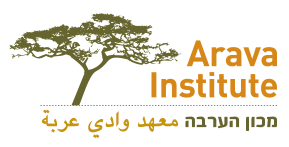In 2015, the Arava Institute for Environmental Studies joined the Cooperative Air Sampling Network. The NOAA/ESRL/GML CCGG cooperative air sampling network effort has run since 1967. It was established at Niwot Ridge, Colorado. Today, the Network is an international effort which includes regular discrete samples from the NOAA ESRL/GML baseline observatories, cooperative fixed sites, and commercial ships.
Air samples are collected approximately weekly from a globally distributed network of sites such as Kibbutz Ketura in South Israel.
Samples are analyzed for CO2, CH4, CO, H2, N2O, and SF6; and by INSTAAR for the stable isotopes of CO2 and CH4 and for many volatile organic compounds (voc) such as ethane (C2H6), ethylene (C2H4) and propane (C3H8). Measurement data are used to identify long-term trends, seasonal variability, and spatial distribution of carbon cycle gases.
Data shown may be measurements of air collected approximately weekly in glass containers and returned to GMD for analysis or averages from air sampled semi-continuously at a GMD baseline observatory. Circle Symbols are thought to be regionally representative of a remote, well-mixed troposphere. Data shown in ORANGE are preliminary.

Data shown may be measurements of air collected approximately weekly in glass containers and returned to GMD for analysis or averages from air sampled semi-continuously at a GMD baseline observatory. Circle Symbols are thought to be regionally representative of a remote, well-mixed troposphere. Data shown in ORANGE are preliminary.
Interested in learning more?
GML home page
CCGG home page
Cooperative Network


